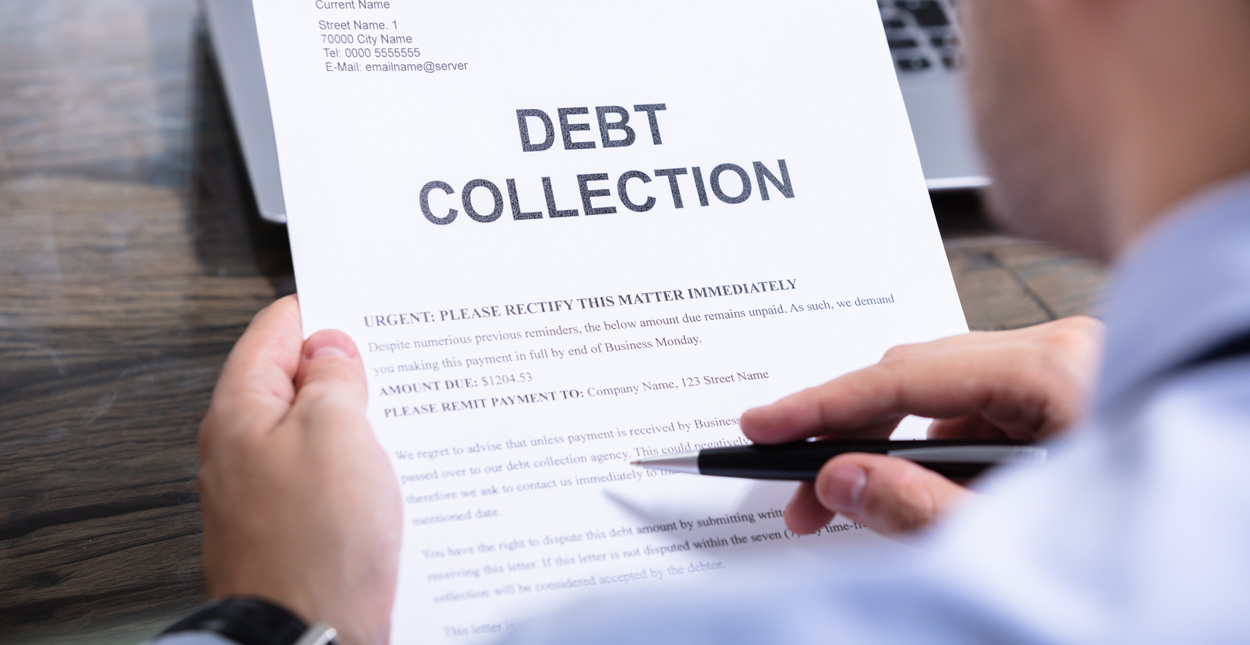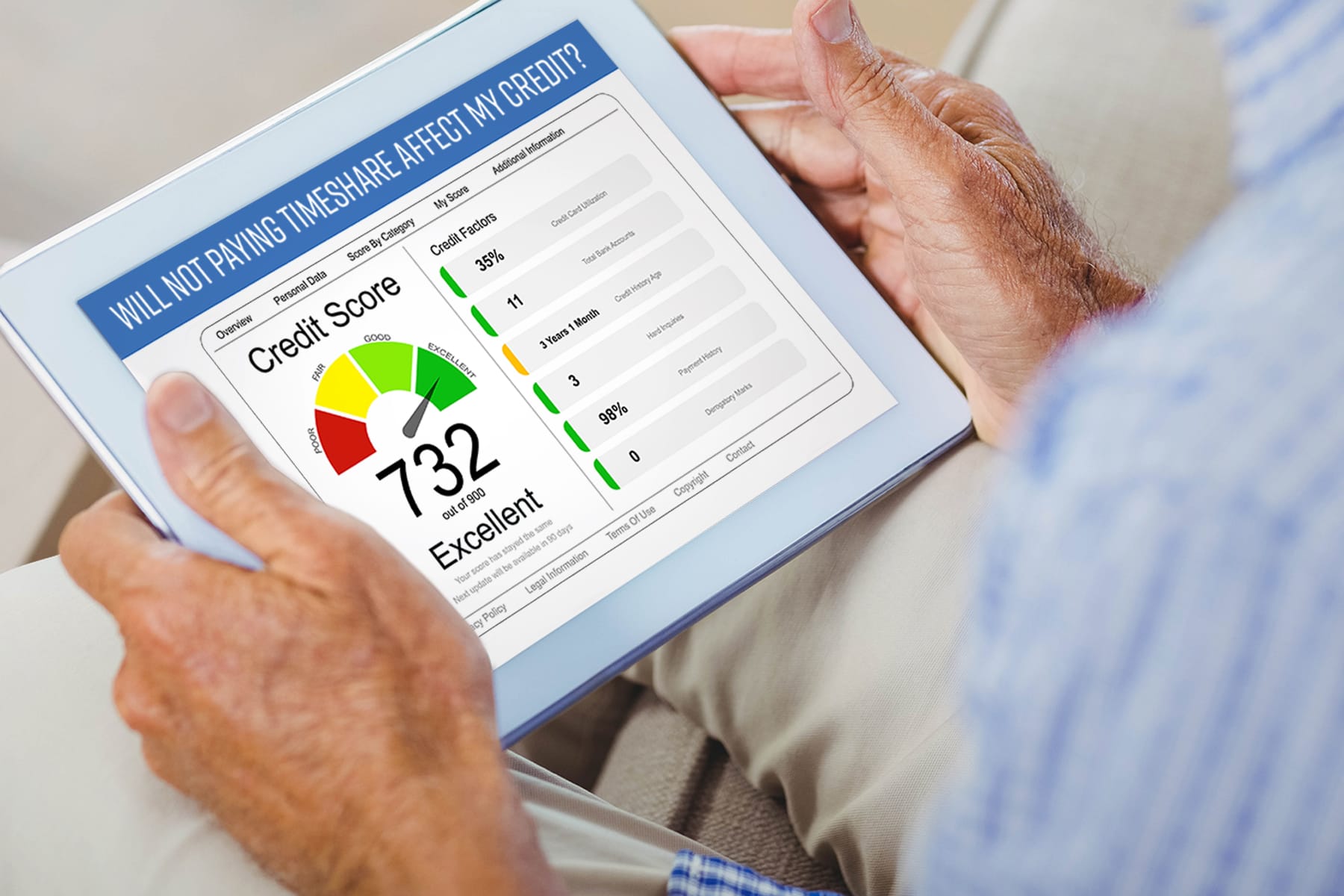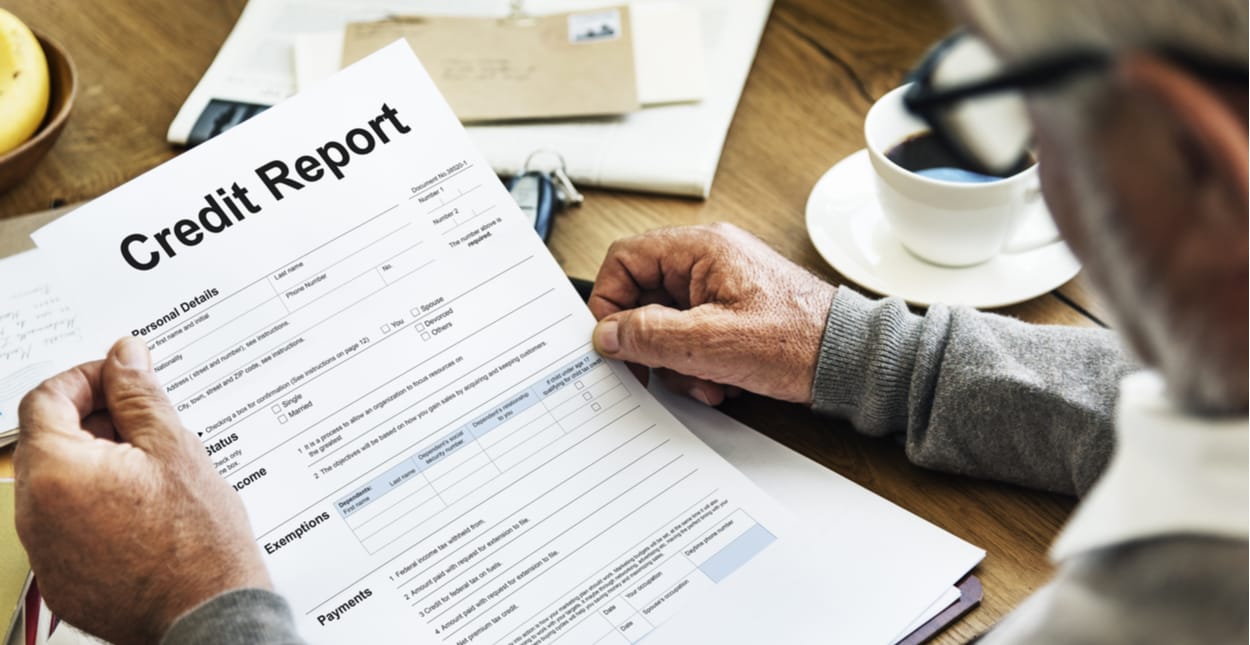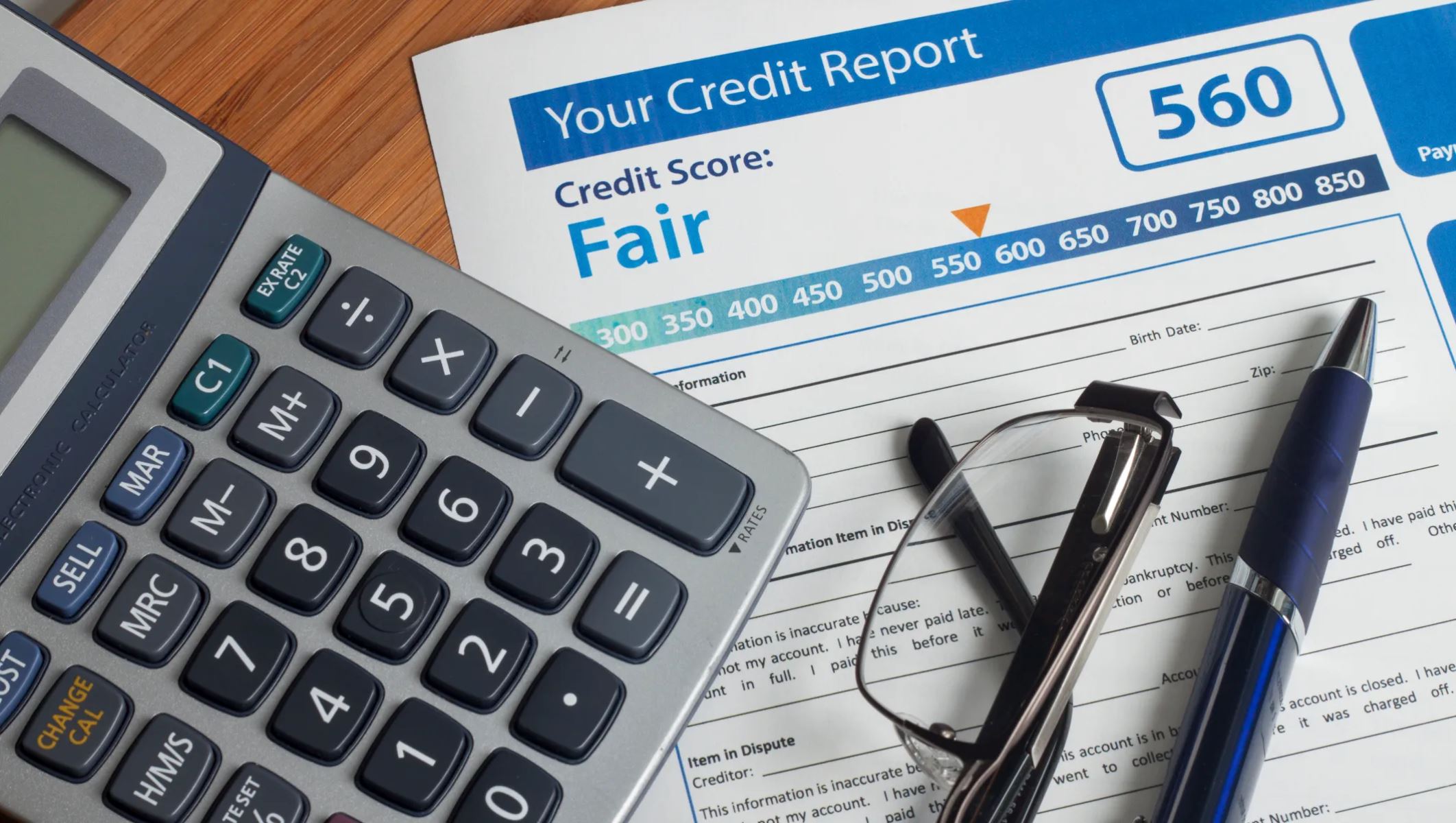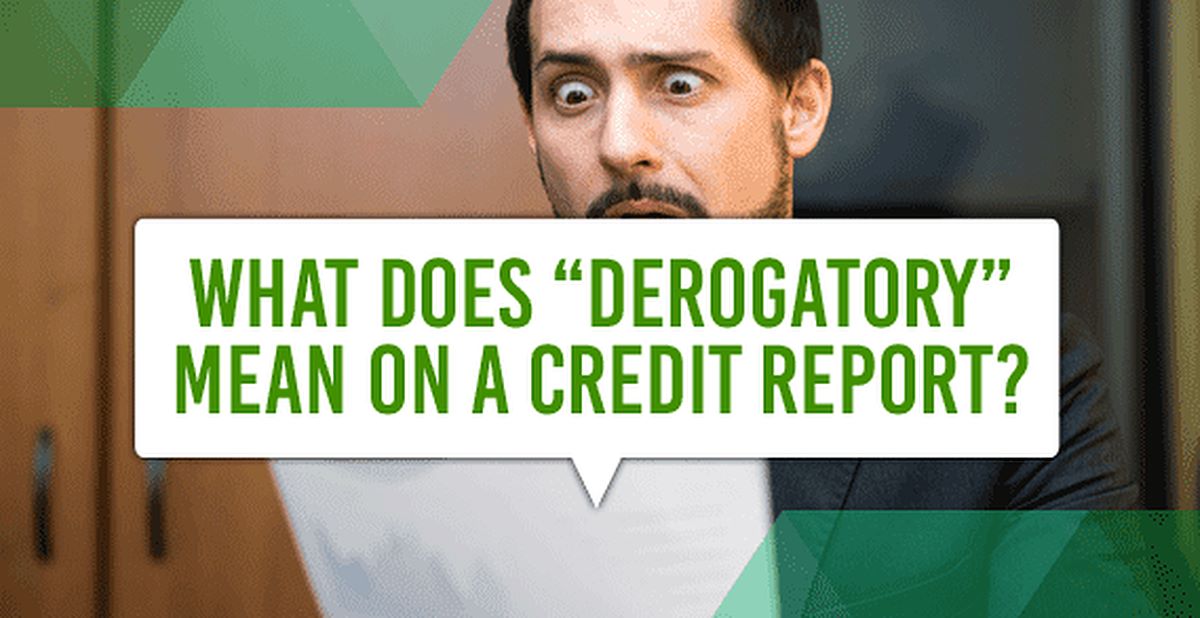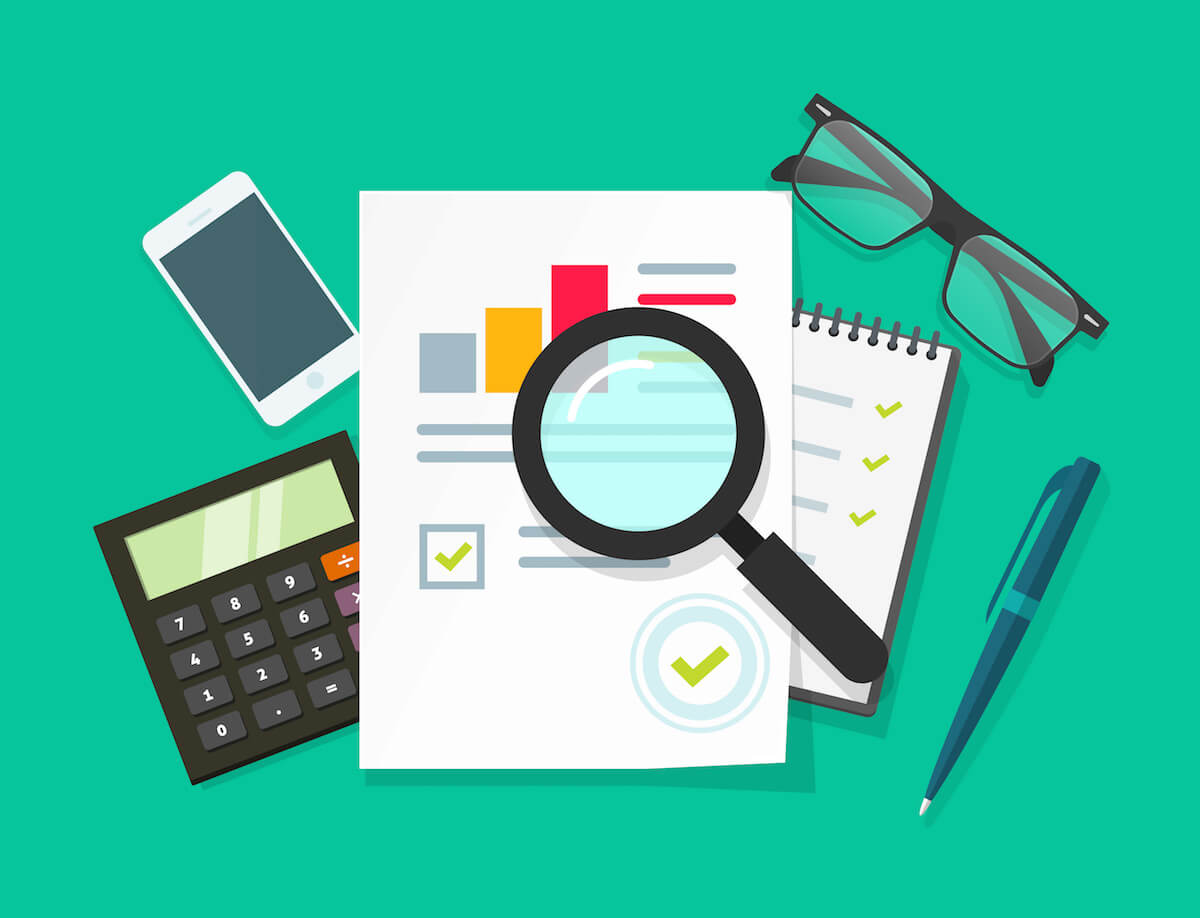Home>Finance>How To Settle Debt And Remove From Credit Report


Finance
How To Settle Debt And Remove From Credit Report
Published: October 20, 2023
Learn how to settle your debts and improve your credit by removing them from your credit report. Get expert tips and advice on managing your finances
(Many of the links in this article redirect to a specific reviewed product. Your purchase of these products through affiliate links helps to generate commission for LiveWell, at no extra cost. Learn more)
Table of Contents
Introduction
Welcome to the world of debt settlement and credit reports. If you find yourself struggling with mounting debts and a tarnished credit history, you’re not alone. Millions of people face financial challenges that impact their creditworthiness and overall financial well-being. However, there is hope. With the right knowledge and strategies, you can settle your debts and remove them from your credit report, paving the way for a fresh financial start.
Debt settlement is a process where you negotiate with your creditors to pay off a portion of your outstanding debts. This can be a viable option if you’re unable to repay the full amount owed. When done successfully, debt settlement can provide you with some relief from the burden of excessive debt and help improve your financial situation.
However, it’s essential to understand that debt settlement can have consequences for your credit report. Your credit report is a detailed record of your financial history, including your borrowing and repayment activities. It is used by lenders and creditors to assess your creditworthiness and determine whether to approve your loan applications.
In this article, we’ll guide you through the process of settling your debts and removing them from your credit report. We’ll cover how to assess your debt situation, negotiate with creditors, create a debt settlement plan, and implement it effectively. We’ll also explore the steps you can take to communicate with credit bureaus and have the settled debts removed from your credit report. Finally, we’ll discuss the importance of monitoring your credit and rebuilding it.
Before we dive in, it’s important to note that debt settlement may not be suitable for everyone, and it’s crucial to consider the potential impact on your credit before proceeding. It’s always wise to seek professional financial advice and explore all available options before making any decisions.
Now, let’s delve into the world of debt settlement and credit reports and discover how you can take control of your financial future.
Understanding Debt Settlement and Credit Reports
Before embarking on your debt settlement journey, it’s crucial to have a solid understanding of how debt settlement works and how it can impact your credit report. Debt settlement involves negotiating with your creditors to reach an agreement that allows you to settle your debts for less than the full amount owed. This can provide relief from overwhelming debt and potentially save you a significant amount of money.
However, it’s important to recognize that debt settlement can have negative implications on your credit report. When you settle a debt, it typically results in a “settled” status being reported on your credit report, which can signal to potential lenders and creditors that you were unable to repay the full amount owed.
As a result, the settled debt may remain on your credit report for a certain period, typically seven years from the date of settlement. During this time, it can negatively impact your credit score and make it more challenging to qualify for new credit, such as loans or credit cards, and potentially lead to higher interest rates and unfavorable terms.
It’s essential to weigh the pros and cons of debt settlement and consider other alternatives, such as debt consolidation or a debt management plan, which may have less of an impact on your credit report but still help you get on track with your finances.
Additionally, it’s crucial to understand how credit reports work. Credit reports are compiled and maintained by credit bureaus, such as Equifax, Experian, and TransUnion. They contain detailed information about your credit history, including your payment history, outstanding debts, credit inquiries, and public records like bankruptcies or tax liens.
Lenders and creditors use this information to assess your creditworthiness, determine the risk of lending to you, and make decisions on whether to approve your applications for credit. A higher credit score indicates a lower risk to lenders, increasing your chances of approval and favorable terms.
It’s important to regularly monitor your credit report to ensure its accuracy and identify any errors or fraudulent activities. You are entitled to a free copy of your credit report from each of the major credit bureaus once a year, which you can obtain through annualcreditreport.com. Reviewing your credit report can help you identify any debts that require settlement and take the necessary steps to begin the process.
Now that we have a foundational understanding of debt settlement and credit reports let’s move on to assessing your debt situation and determining the best approach for negotiation.
Assessing Your Debt Situation
Before diving into debt settlement, it’s essential to assess your debt situation thoroughly. Taking a comprehensive look at your debts will help you understand the scope of your financial challenges and develop a strategic plan for resolving them.
Start by gathering all your financial documents, including credit card statements, loan agreements, and any other relevant paperwork. Take note of the outstanding balances, interest rates, and minimum monthly payments for each debt. Organize this information into a clear and concise spreadsheet or list.
Next, evaluate your monthly income and expenses. Calculate your total income and subtract your essential expenses such as rent or mortgage payments, utilities, groceries, and transportation costs. This will give you an idea of how much disposable income you have available to tackle your debts.
Once you have a clear picture of your debts and your available income, prioritize your debts. Start by identifying high-interest debts that are costing you the most in interest payments over time. These debts should be the focus of your debt settlement efforts.
Consider reaching out to a credit counselor or financial advisor to get a professional perspective on your debt situation. They can provide valuable insights and guidance tailored to your specific circumstances. They may also suggest alternative options for debt relief, such as debt consolidation or debt management plans.
Remember, the goal of assessing your debt situation is to gain a clear understanding of your financial landscape, identify your most burdensome debts, and determine the best course of action. With this knowledge, you can proceed confidently to negotiate with your creditors and develop a debt settlement plan that suits your needs.
Now that you have a solid grasp of your debt situation, let’s explore the next step: negotiating with your creditors.
Negotiating with Creditors
When it comes to debt settlement, one of the key steps is negotiating with your creditors. It’s important to approach this process with a clear plan and a goal in mind. Here are some strategies to help you navigate the negotiation process effectively:
- Review your financial situation: Before reaching out to your creditors, take the time to evaluate your financial capacity to make settlement offers. Assess your available funds and determine how much you can realistically afford to pay towards your debts.
- Communicate with your creditors: Contact your creditors and express your willingness to settle your debts. Explain your financial hardship and your desire to find a mutually beneficial solution. Be prepared to provide supporting documentation if requested.
- Offer a lump-sum payment: Creditors are often more inclined to negotiate a settlement if they can receive a lump-sum payment. Determine the amount you can offer as a settlement and propose it to your creditors. Remember, the goal is to settle for less than the full amount owed.
- Consider working with a debt settlement company: If negotiating with your creditors seems overwhelming or you’re unsure how to proceed, you may choose to work with a reputable debt settlement company. These companies have experience handling negotiations on behalf of individuals and can guide you through the process.
- Get settlement terms in writing: Once you have successfully negotiated a settlement with your creditors, make sure to get the agreement in writing. This will protect both parties and ensure that there are no misunderstandings or discrepancies regarding the terms of the settlement.
Remember, negotiation is a give-and-take process. It’s important to approach your creditors with respect and professionalism. Be prepared for some back-and-forth as you work towards a settlement that is acceptable to both parties. Keep in mind that creditors may request proof of your financial hardship or ask for additional information to support your case.
By employing these negotiation strategies and demonstrating your commitment to resolving your debts, you increase your chances of reaching a favorable settlement agreement. Once the negotiations are successful, it’s time to move on to the next step: creating a debt settlement plan.
Creating a Debt Settlement Plan
Creating a well-structured debt settlement plan is crucial to successfully navigate the process and achieve your financial goals. Here are the essential steps to create an effective debt settlement plan:
- Determine your budget: Assess your income, expenses, and savings to understand how much you can allocate towards settling your debts. Set a realistic budget that allows you to make regular payments towards your settlement offers while still maintaining your essential living expenses.
- Prioritize your debts: Identify the debts you want to settle first based on factors such as interest rates, outstanding balances, and creditor priorities. Focusing on one debt at a time can help you stay organized and motivated throughout the settlement process.
- Settlement offers: Based on your available funds and the priority of each debt, determine the amount you can offer to each creditor to settle the debt. Generally, settlement offers range from 20% to 50% of the total amount owed, but this can vary depending on your specific circumstances and negotiations.
- Communicate with creditors: Reach out to each creditor individually and present your settlement offers. Clearly explain your financial situation and your intention to settle the debt. Be prepared for possible counteroffers and negotiate until an agreement is reached.
- Document agreements: Once a settlement agreement is reached with a creditor, make sure to get the terms in writing. Ensure that all parties involved sign the agreement and keep a copy for your records.
- Make consistent payments: Stick to your budget and make regular payments towards your settlement agreements. Consistency is key to maintaining creditor relationships and successfully completing your debt settlement plan.
- Track progress: Keep a record of your settlement payments and monitor your progress. Celebrate each debt that is settled and use it as motivation to continue until all your debts are resolved.
Remember, the debt settlement process requires diligence, patience, and discipline. Stay committed to your debt settlement plan, and over time, you will see tangible progress in reducing your debts and improving your financial situation.
Now that you have a solid debt settlement plan in place, it’s time to put it into action and start implementing your strategies for settling your debts.
Implementing the Debt Settlement Plan
Now that you have created a debt settlement plan, it’s time to put it into action and start implementing your strategies for settling your debts. Here are the key steps to effectively implement your debt settlement plan:
- Stick to your budget: Adhere to the budget you have created and allocated for your settlement payments. This will ensure that you have enough funds available to make consistent and timely payments towards your settlement offers.
- Contact creditors: Reach out to each creditor to formally initiate the settlement process. Provide them with your settlement offers and any supporting documentation they may require. Be prepared to negotiate and answer any questions they may have.
- Make settlement payments: Once an agreement is reached, make timely payments according to the terms of the settlement. Ensure that you are paying the agreed-upon settlement amount and not the original debt balance.
- Monitor your accounts: Regularly monitor your bank and credit card statements to ensure that your settlement payments are being applied correctly. Keep a record of your payments and communication with creditors for reference purposes.
- Communicate any changes: If any unforeseen circumstances arise that may affect your ability to make your settlement payments, promptly inform your creditors. Open communication can sometimes help you negotiate alternative payment arrangements if needed.
- Stay motivated: Debt settlement can be a long and challenging process. Stay focused and motivated by celebrating each debt that you successfully settle. Use your progress as a reminder of your financial goals and the positive impact you are making on your overall financial well-being.
Remember, implementing your debt settlement plan requires discipline and commitment. It may take time to settle all your debts, but staying consistent with your payments and maintaining open communication with your creditors will increase your chances of achieving successful settlements.
As you work through your debt settlement plan, keep in mind that your credit report may still reflect the settled debts. However, once you have successfully settled all your debts, you can take steps to have them removed from your credit report, which we’ll explore in the next section.
Now that you’re actively implementing your debt settlement plan, let’s dive into the process of communicating with credit bureaus and removing the settled debts from your credit report.
Communicating with Credit Bureaus
As you progress through your debt settlement plan and successfully settle your debts, it’s crucial to communicate with credit bureaus to ensure that the settled debts are accurately reflected on your credit report. Here’s how you can effectively communicate with credit bureaus:
- Request your credit report: Obtain a copy of your credit report from each of the major credit bureaus – Equifax, Experian, and TransUnion. Review the reports carefully to identify the settled debts that need to be addressed.
- Dispute any inaccuracies: If you notice any errors in your credit report, such as debts that were not properly marked as settled, you have the right to dispute those discrepancies. Follow the credit bureau’s dispute process and provide any supporting documentation to support your claim.
- Send goodwill letters: While credit bureaus are not obligated to remove settled debts from your credit report, you can try sending goodwill letters to request the removal of the settled debts. In the letter, explain your financial hardship, your commitment to settling the debts, and the positive changes you have made to improve your financial situation. There is no guarantee of success with goodwill letters, but it’s worth a try.
- Stay vigilant and persistent: Monitoring your credit report regularly is essential to ensure that the settled debts are accurately reflected. If you find that the settled debts are still being reported incorrectly, continue to communicate with the credit bureaus to rectify the situation. This may require providing additional documentation or following up on your previous disputes.
- Consider professional assistance: If you’re experiencing challenges in communicating with credit bureaus or navigating the disputes process, you may seek the assistance of a reputable credit repair agency. These agencies specialize in working with credit bureaus and can help you address any issues that arise during the process.
Remember, the process of communicating with credit bureaus requires patience and persistence. It’s essential to keep thorough records of your communication, including copies of letters, dispute forms, and supporting documentation. This will help you advocate for yourself and ensure that the settled debts are accurately reflected on your credit report.
Now that you understand the importance of communicating with credit bureaus, let’s explore the steps you can take to remove settled debts from your credit report.
Removing Debt from Your Credit Report
Once you have successfully settled your debts, you may be wondering how to remove them from your credit report. While removing settled debts entirely from your credit report can be challenging, there are steps you can take to minimize their impact and improve your credit profile:
- Review your credit report: Obtain a copy of your credit report from each of the major credit bureaus. Carefully review the report to ensure that the settled debts are accurately marked as “settled” or “paid” rather than showing as delinquent or unpaid.
- Dispute inaccuracies: If you find that the settled debts are still being reported incorrectly, initiate a dispute with the credit bureaus. Provide any supporting documentation, such as settlement agreements or payment receipts, to support your claim.
- Request removal after a certain period: While credit bureaus are not required to remove settled debts before the standard reporting period of seven years, you can try requesting their removal after a certain amount of time has passed. Write a letter to the credit bureaus explaining that the settled debts have been paid or settled for a specific period and request their removal as a gesture of goodwill.
- Build a positive credit history: Although settled debts may remain on your credit report, you can offset their impact by building a positive credit history. Make timely payments on your current debts and consider opening new credit accounts responsibly. Over time, demonstrating consistent and responsible credit behavior will improve your credit score and overshadow the negative impact of the settled debts.
- Seek professional assistance: If you’re facing challenges in getting settled debts removed from your credit report, consider working with a reputable credit repair agency. These agencies specialize in advocating for consumers and can help guide you through the process of removing inaccuracies or negotiating with credit bureaus.
It’s important to note that removing settled debts from your credit report is not guaranteed, and the impact on your credit score may still persist for some time. However, by following the steps mentioned above and focusing on building a positive credit history, you can mitigate the impact and work towards improving your overall creditworthiness.
Now that you have a good understanding of how to remove settled debts from your credit report let’s move on to the importance of monitoring your credit and rebuilding it.
Monitoring and Rebuilding Credit
As you navigate the process of settling your debts and resolving financial challenges, it’s important to monitor and actively work towards rebuilding your credit. Here are some key steps you can take to monitor and rebuild your credit:
- Monitor your credit regularly: Keep a close eye on your credit report by checking it regularly. You can request a free copy of your credit report from each of the major credit bureaus once a year. Look for any errors, inaccuracies, or signs of fraudulent activity, and take immediate action to resolve them.
- Stay vigilant: Be proactive in monitoring your bank and credit card statements for any suspicious transactions or signs of identity theft. Promptly report any fraudulent activity to your financial institution and the appropriate authorities.
- Make timely payments: Consistently make your payments on time for your current debts. Payment history has a significant impact on your credit score, so ensuring you pay your bills on time is crucial. Consider setting up automatic payments or reminders to help you stay on track.
- Control your credit utilization: Aim to keep your credit utilization ratio low, ideally below 30% of your available credit. This means using only a portion of your available credit rather than maxing out your credit cards. Keeping a low credit utilization ratio demonstrates responsible credit management.
- Show stability: Lenders and creditors value stability, so avoid major changes that could negatively impact your credit, such as frequently opening or closing credit accounts. Maintain your current credit accounts and show a consistent payment history over time.
- Build positive credit: Consider opening a secured credit card or a small credit-builder loan to establish or rebuild your credit history. Make small purchases and pay them off in full each month to demonstrate responsible credit management. Over time, this will help improve your credit score.
- Seek professional guidance: If you feel overwhelmed or uncertain about the credit rebuilding process, consult with a credit counseling agency or financial advisor who can provide guidance tailored to your specific situation. They can help you develop a personalized plan to rebuild your credit successfully.
Rebuilding credit is a gradual process that requires consistency and responsible financial habits. It won’t happen overnight, but with patience and determination, you can rebuild your credit and regain financial stability.
Remember, your credit is an important tool for financial opportunities, so it’s essential to treat it with care. By monitoring your credit regularly, making timely payments, and adopting responsible credit practices, you can gradually improve your creditworthiness and open doors to better financial options.
Now that you have a solid understanding of monitoring and rebuilding credit, it’s time to wrap up and reflect on the journey you’ve undertaken to settle your debts and improve your financial well-being.
Conclusion
Congratulations on taking the steps to settle your debts and improve your financial situation. Navigating the world of debt settlement and credit reports can be challenging, but with the right knowledge and strategies, you can overcome financial hurdles and pave the way for a brighter future.
Throughout this article, we explored the process of debt settlement, from assessing your debt situation to negotiating with creditors and creating a debt settlement plan. We discussed the importance of communicating with credit bureaus, removing settled debts from your credit report, and monitoring and rebuilding your credit.
Remember, debt settlement can have consequences on your credit report, and it’s important to weigh the potential impact before proceeding. However, by effectively communicating with your creditors, implementing a well-structured debt settlement plan, and maintaining open lines of communication with credit bureaus, you can navigate the process and minimize the impact on your creditworthiness.
As you move forward, make it a priority to monitor your credit regularly, make timely payments on your current debts, and focus on building a positive credit history. Rebuilding credit takes time and effort, but with persistence, you can improve your creditworthiness and regain control of your financial well-being.
Remember, each step you take towards settling your debts and improving your credit is a significant achievement. Stay committed to your financial goals, seek guidance when needed, and celebrate your progress along the way.
With determination, discipline, and an unwavering focus on your financial well-being, you have the power to free yourself from the burden of debt and pave the way towards a more secure and prosperous future.

